某一日收到上游调用方的反馈,提供的某一个Dubbo接口,每天在固定的时间点被短时间熔断,抛出的异常信息为提供方dubbo线程池被耗尽。当前dubbo接口日请求量18亿次,报错请求94W/天,至此开始了优化之旅。
首先进行常规的系统信息监控(机器、JVM内存、GC、线程),发现虽稍有突刺,但都在合理范围内,且跟报错时间点对不上,先暂时忽略。
其次进行流量分析,发现每天固定时间点会有流量突增的情况,流量突增的点跟报错的时间点也吻合,初步判断为短时大流量导致。
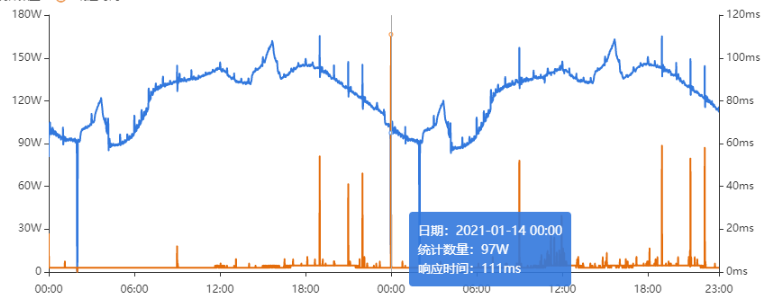
流量趋势
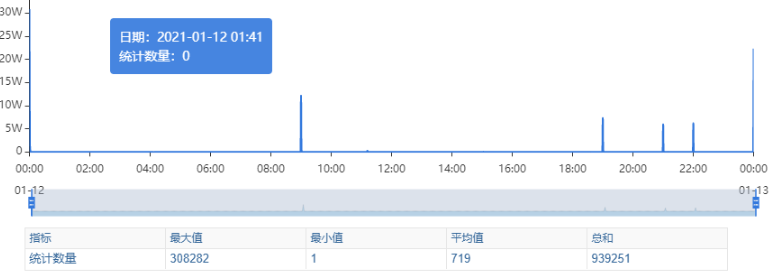
被降级量
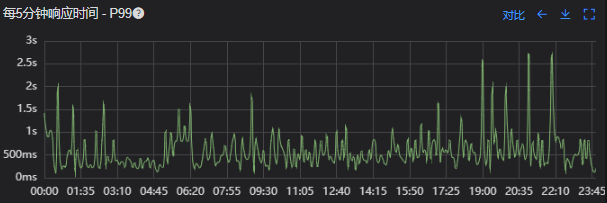
接口99线
1) 流程图

2) 流程分析
收到请求后调用下游接口,使用hystrix熔断器,熔断时间为500MS
根据下游接口返回的数据,进行详情数据的封装,第一步先到本地缓存中获取,如果本地缓存没有,则从Redis进行回源,Redis中无则直接返回,异步线程从数据库进行回源。
如果第一步调用下游接口异常,则进行数据兜底,兜底流程为先到本地缓存中获取,如果本地缓存没有,则从Redis进行回源,Redis中无则直接返回,异步线程从数据库进行回源。
1) 下游接口服务耗时比较长
调用链显示,虽然下游接口的P99线在峰值流量时存在突刺,超出1S,但因为熔断超时的设置(熔断时间500MS,coreSize&masSize=50,下游接口平均耗时10MS以下),判断下游接口不是问题的关键点,为进一步排除干扰,在下游服务存在突刺时能快速失败,调整熔断时间为100MS,dubbo超时时间100MS。
2) 获取详情本地缓存无数据,Redis回源
借助调用链平台,第一步分析Redis请求流量,以此来判断本地缓存的命中率,发现Redis的流量是接口流量的2倍,从设计上来说不应该出现这个现象。开始代码Review,发现在有一处逻辑出现了问题。
没有从本地缓存读取,而是直接从Redis中获取了数据,Redis最大响应时间也确实发现了不合理的突刺,继续分析发现Redis响应时间和Dubbo99线突刺情况基本一致,感觉此时已经找到了问题的原因,心中暗喜。
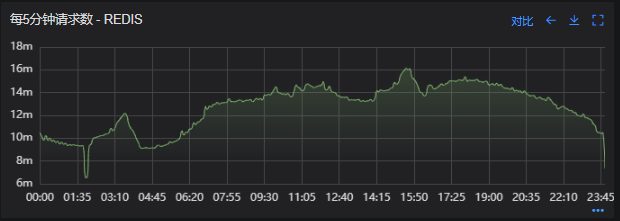
Redis请求流量
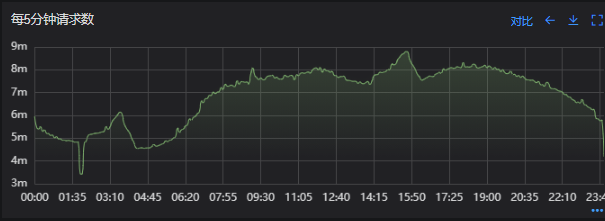
服务接口请求流量
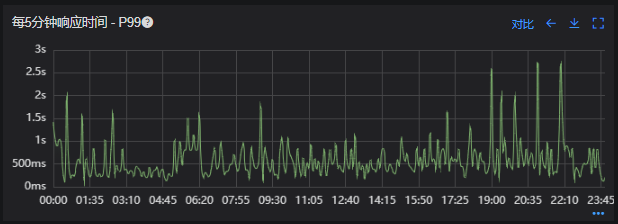
Dubbo99线
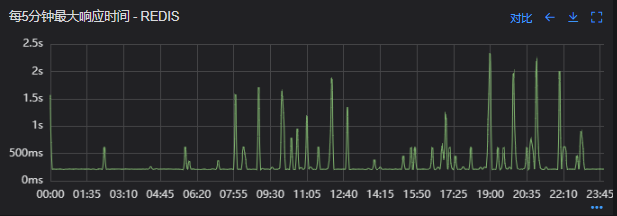
Redis最大响应时间
3) 获取兜底数据本地缓存无数据,Redis回源
正常
4)记录请求结果入Redis
因为当前Redis做了资源隔离,且未在DB后台查询到慢日志,此时分析导致Redis变慢的原因有很多,不过其他的都被主观忽略了,注意力都在请求Redis流量翻倍的问题上了,故优先解决3.2.2中的问题。

上线前Redis请求量
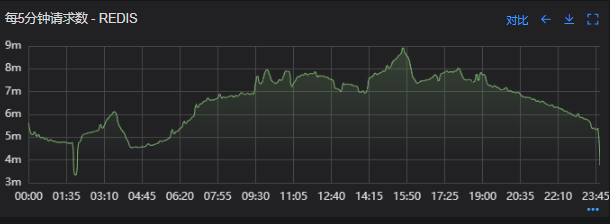
上线后Redis请求量
上线后Redis流量翻倍问题得到解决,Redis最大响应时间突刺有所缓解,但依旧没能彻底解决,说明大流量查询不是最根本的原因。
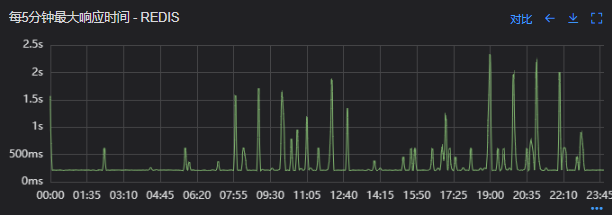
redis最大响应时间(上线前)
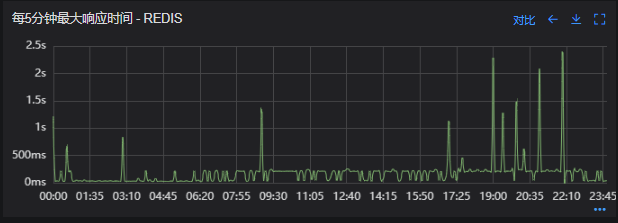
redis最大响应时间(上线后)
在Redis异常流量问题解决后,问题并未得到彻底解决,此时能做的就是静下心来,仔细去梳理导致Redis慢的原因,思路主要从以下三个方面:
出现了慢查询
Redis服务出现性能瓶颈
客户端配置不合理
基于以上思路,一个个的进行排查;查询Redis慢查询日志,未发现慢查询。
借用调用链平台详细分析慢的Redis命令,没有了大流量导致的慢查询的干扰,问题定位流程很快,大量的耗时请求在setex方法上,偶尔出现查询的慢请求也都是在setex方法之后,根据Redis单线程的特性判断setex是Redis99线突刺的元凶。找到具体语句,定位到具体业务后,首先申请扩容Redis,由6个master扩到8个master。

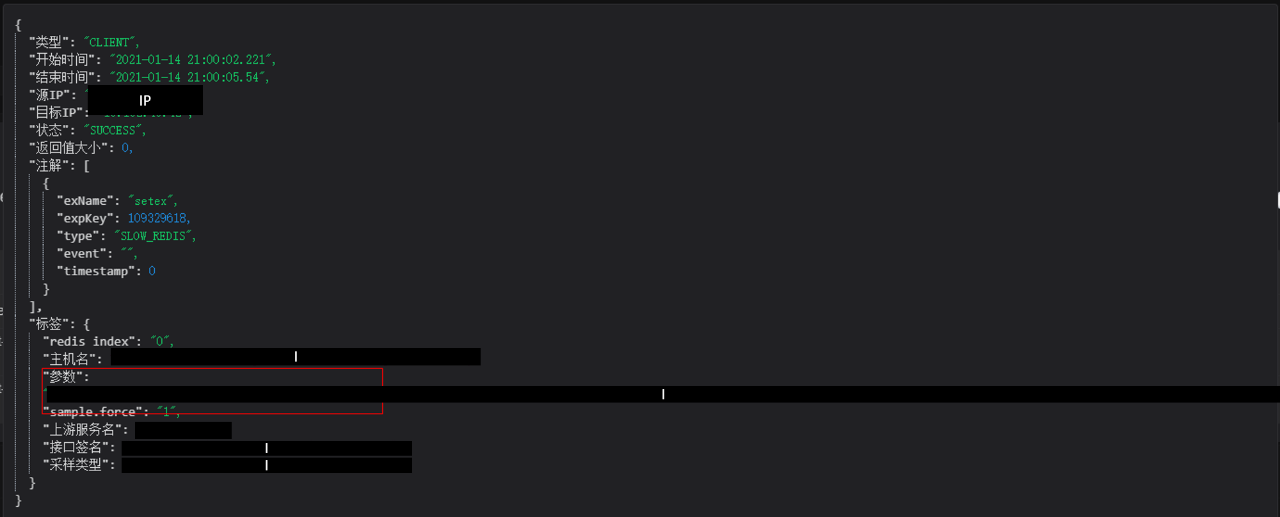
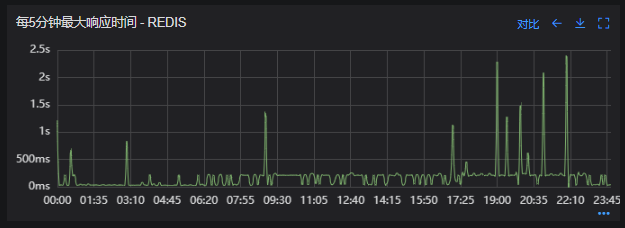
Redis扩容前

Redis扩容后
从结果上看,扩容基本上没有效果,说明redis服务本身不是性能瓶颈点,此时剩下的一个就是客户端相关配置了。
1)连接池优化
Redis扩容没有效果,针对客户端可能出现的问题,此时怀疑的点有两个方向。
第一个是客户端在处理Redis集群模式时,对连接的管理上存在BUG,第二个是连接池参数设置不合理,此时源码分析和连接池参数调整同步进行。
① 判断客户端连接管理上是否有BUG
在分析完,客户端处理连接池的源码后,没有问题,跟预想一致,按照槽位缓存连接池,第一个假设被排除,源码如下。
1、setExpublic String setex(final byte[] key, final int seconds, final byte[] value) {return new JedisClusterCommand<String>(connectionHandler, maxAttempts) {public String execute(Jedis connection) {return connection.setex(key, seconds, value);}}.runBinary(key);}2、runBinarypublic T runBinary(byte[] key) {if (key == null) {throw new JedisClusterException("No way to dispatch this command to Redis Cluster.");}return runWithRetries(key, this.maxAttempts, false, false);}3、runWithRetriesprivate T runWithRetries(byte[] key, int attempts, boolean tryRandomNode, boolean asking) {if (attempts <= 0) {throw new JedisClusterMaxRedirectionsException("Too many Cluster redirections?");}Jedis connection = null;try {if (asking) {// TODO: Pipeline asking with the original command to make it// faster....connection = askConnection.get();connection.asking();// if asking success, reset asking flagasking = false;} else {if (tryRandomNode) {connection = connectionHandler.getConnection();} else {connection = connectionHandler.getConnectionFromSlot(JedisClusterCRC16.getSlot(key));}}return execute(connection);}4、getConnectionFromSlotpublic Jedis getConnectionFromSlot(int slot) {JedisPool connectionPool = cache.getSlotPool(slot);if (connectionPool != null) {// It can't guaranteed to get valid connection because of node// assignmentreturn connectionPool.getResource();} else {renewSlotCache(); //It's abnormal situation for cluster mode, that we have just nothing for slot, try to rediscover stateconnectionPool = cache.getSlotPool(slot);if (connectionPool != null) {return connectionPool.getResource();} else {//no choice, fallback to new connection to random nodereturn getConnection();}}}
② 分析连接池参数
通过跟中间件团队沟通,以及参考commons-pool2官方文档修改如下;
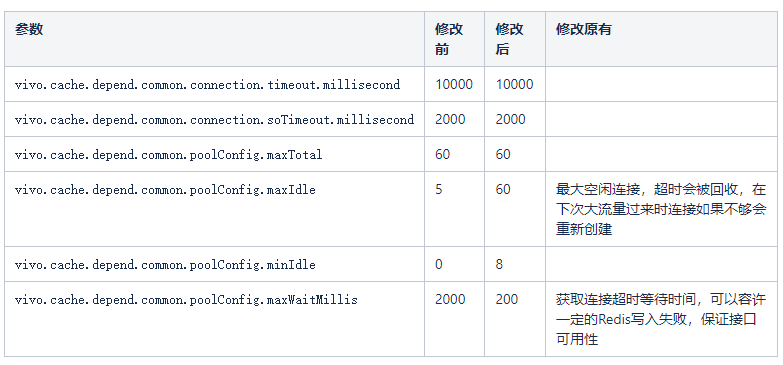
参数调整后,1S以上的请求量得到减少,但还是存在,上游反馈降级量由每天90万左右降到每天6W个(关于maxWaitMillis设置为200MS后为什么还会有超过200MS的请求,下文有解释)。
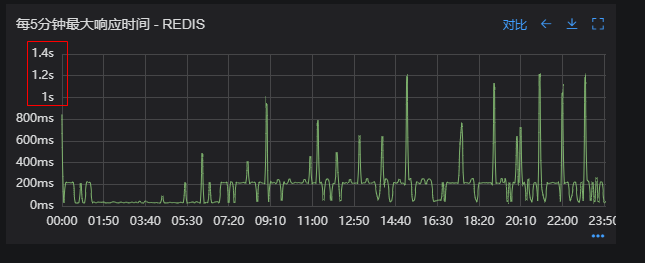
参数优化后Reds最大响应时间
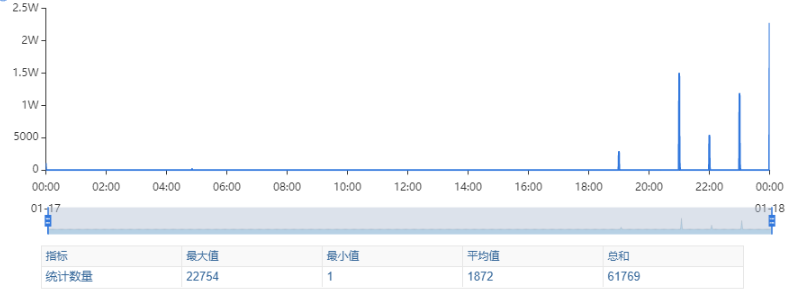
参数优化后接口报错量
2)持续优化
优化不能停止,如何把Redis的所有写入请求降低到200MS以内,此时的优化思路还是调整客户端配置参数,分析Jedis获取连接相关源码;
Jedis获取连接源码
public T borrowObject(final long borrowMaxWaitMillis) throws Exception {assertOpen();final AbandonedConfig ac = this.abandonedConfig;if (ac != null && ac.getRemoveAbandonedOnBorrow() &&(getNumIdle() < 2) &&(getNumActive() > getMaxTotal() - 3) ) {removeAbandoned(ac);}PooledObject<T> p = null;// Get local copy of current config so it is consistent for entire// method executionfinal boolean blockWhenExhausted = getBlockWhenExhausted();boolean create;final long waitTime = System.currentTimeMillis();while (p == null) {create = false;p = idleObjects.pollFirst();if (p == null) {p = create();if (p != null) {create = true;}}if (blockWhenExhausted) {if (p == null) {if (borrowMaxWaitMillis < 0) {p = idleObjects.takeFirst();} else {p = idleObjects.pollFirst(borrowMaxWaitMillis,TimeUnit.MILLISECONDS);}}if (p == null) {throw new NoSuchElementException("Timeout waiting for idle object");}} else {if (p == null) {throw new NoSuchElementException("Pool exhausted");}}if (!p.allocate()) {p = null;}if (p != null) {try {factory.activateObject(p);} catch (final Exception e) {try {destroy(p);} catch (final Exception e1) {// Ignore - activation failure is more important}p = null;if (create) {final NoSuchElementException nsee = new NoSuchElementException("Unable to activate object");nsee.initCause(e);throw nsee;}}if (p != null && (getTestOnBorrow() || create && getTestOnCreate())) {boolean validate = false;Throwable validationThrowable = null;try {validate = factory.validateObject(p);} catch (final Throwable t) {PoolUtils.checkRethrow(t);validationThrowable = t;}if (!validate) {try {destroy(p);destroyedByBorrowValidationCount.incrementAndGet();} catch (final Exception e) {// Ignore - validation failure is more important}p = null;if (create) {final NoSuchElementException nsee = new NoSuchElementException("Unable to validate object");nsee.initCause(validationThrowable);throw nsee;}}}}}updateStatsBorrow(p, System.currentTimeMillis() - waitTime);return p.getObject();}
获取连接的大致流程如下:
是否有空闲连接,有空闲连接就直接返回,没有就创建;
创建时如果超出最大连接数,则判断是否有其他线程在创建连接,如果没则直接返回,如果有则等待maxWaitMis时间(其他线程可能创建失败),如果未超出最大连接,则执行创建连接操作(此时获取连接等待时间可能会大于maxWaitMs)。
如果创建不成功,则判断是否是阻塞获取连接,如果不是则直接抛出异常,连接池不够用,如果是则判断maxWaitMillis是否小于0,如果小于0则阻塞等待,如果大于0则阻塞等待maxWaitMillis。
后续就是根据参数来判断是否需要做连接check等。
根据以上流程分析,maxWaitMills目前设置的为200,以上流程加起来最大阻塞时间为400MS,大部分情况为200MS,不应该出现超出400MS的突刺。
此时问题可能出现在创建连接上,因为创建连接比较耗时,且创建时间不定,重点分析是否有这个场景,通过DB后台监控Redis连接情况。
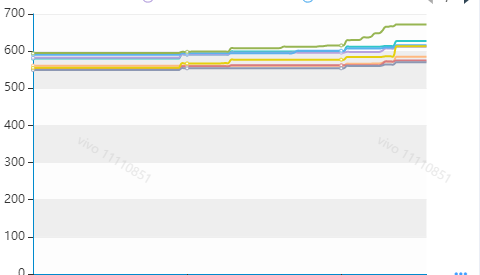
DB后台监控Redis服务连接
分析上图发现,确实在几个时间点(9:00,12:00,19:00...),redis连接数存在上涨情况,跟Redis突刺时间基本吻合。感觉(之前的各种尝试后,已经不敢用确定了)问题到此定位清晰(在突增流量过来时,连接池可用连接满足不了需求,会创建连接,造成请求等待)。
此时的想法是在服务启动时就进行连接池的创建,尽量减少新连接的创建,修改连接池参数vivo.cache.depend.common.poolConfig.minIdle,结果竟然无效???
啥都不说了,开始撸源码,jedis底层使用的是commons-pool2来管理连接的,查看项目中使用的commons-pool2-2.6.2.jar部分源码;
CommonPool2源码
public GenericObjectPool(final PooledObjectFactory<T> factory,final GenericObjectPoolConfig<T> config) {super(config, ONAME_BASE, config.getJmxNamePrefix());if (factory == null) {jmxUnregister(); // tidy upthrow new IllegalArgumentException("factory may not be null");}this.factory = factory;idleObjects = new LinkedBlockingDeque<>(config.getFairness());setConfig(config);}
竟然发现没有初始化连接的地方,开始咨询中间件团队,中间件团队给出的源码(commons-pool2-2.4.2.jar)如下,方法执行后多了一次startEvictor方法的调用?
CommonPool2源码
1、初始化连接池public GenericObjectPool(PooledObjectFactory<T> factory,GenericObjectPoolConfig config) {super(config, ONAME_BASE, config.getJmxNamePrefix());if (factory == null) {jmxUnregister(); // tidy upthrow new IllegalArgumentException("factory may not be null");}this.factory = factory;idleObjects = new LinkedBlockingDeque<PooledObject<T>>(config.getFairness());setConfig(config);startEvictor(getTimeBetweenEvictionRunsMillis());}
为啥不一样???开始检查Jar包,版本不一样,中间件给出的版本是在V2.4.2,项目实际使用的是V2.6.2,分析startEvictor有一步逻辑正是处理连接池预热逻辑。
Jedis连接池预热
1、final void startEvictor(long delay) {synchronized (evictionLock) {if (null != evictor) {EvictionTimer.cancel(evictor);evictor = null;evictionIterator = null;}if (delay > 0) {evictor = new Evictor();EvictionTimer.schedule(evictor, delay, delay);}}}2、class Evictor extends TimerTask {/*** Run pool maintenance. Evict objects qualifying for eviction and then* ensure that the minimum number of idle instances are available.* Since the Timer that invokes Evictors is shared for all Pools but* pools may exist in different class loaders, the Evictor ensures that* any actions taken are under the class loader of the factory* associated with the pool.*/public void run() {ClassLoader savedClassLoader =Thread.currentThread().getContextClassLoader();try {if (factoryClassLoader != null) {// Set the class loader for the factoryClassLoader cl = factoryClassLoader.get();if (cl == null) {// The pool has been dereferenced and the class loader// GC'd. Cancel this timer so the pool can be GC'd as// well.cancel();return;}Thread.currentThread().setContextClassLoader(cl);}// Evict from the pooltry {evict();} catch(Exception e) {swallowException(e);} catch(OutOfMemoryError oome) {// Log problem but give evictor thread a chance to continue// in case error is recoverableoome.printStackTrace(System.err);}// Re-create idle instances.try {ensureMinIdle();} catch (Exception e) {swallowException(e);}} finally {// Restore the previous CCLThread.currentThread().setContextClassLoader(savedClassLoader);}}}3、 void ensureMinIdle() throws Exception {ensureIdle(getMinIdle(), true);}4、 private void ensureIdle(int idleCount, boolean always) throws Exception {if (idleCount < 1 || isClosed() || (!always && !idleObjects.hasTakeWaiters())) {return;}while (idleObjects.size() < idleCount) {PooledObject<T> p = create();if (p == null) {// Can't create objects, no reason to think another call to// create will work. Give up.break;}if (getLifo()) {idleObjects.addFirst(p);} else {idleObjects.addLast(p);}}if (isClosed()) {// Pool closed while object was being added to idle objects.// Make sure the returned object is destroyed rather than left// in the idle object pool (which would effectively be a leak)clear();}}
修改Jar版本,配置中心增加
vivo.cache.depend.common.poolConfig.timeBetweenEvictionRunsMillis(检查一次连接池中空闲的连接,把空闲时间超过minEvictableIdleTimeMillis毫秒的连接断开,直到连接池中的连接数到minIdle为止)。
vivo.cache.depend.common.poolConfig.minEvictableIdleTimeMillis(连接池中连接可空闲的时间,毫秒)两个参数,重启服务后,连接池正常预热,最终从Redis层面上解决问题。
优化结果如下,性能问题基本得到解决;
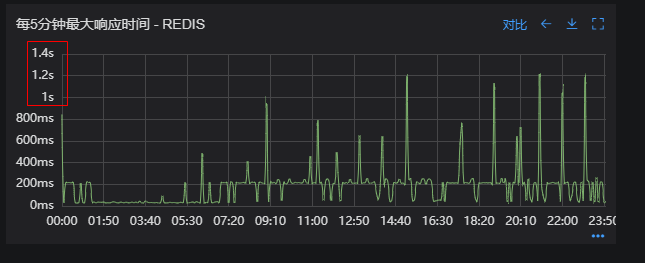
Redis响应时间(优化前)
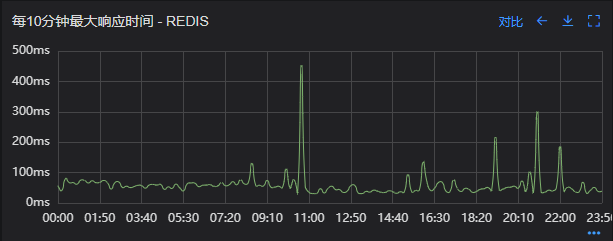
Redis响应时间(优化后)

接口99线(优化前)
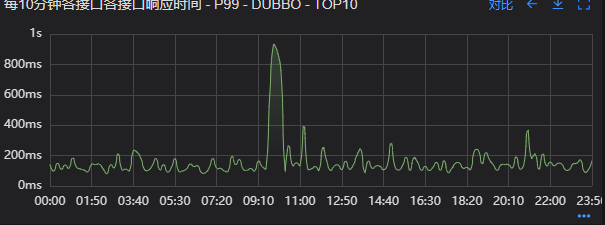
接口99线(优化后)
出现线上问题时,首先要考虑的还是快速恢复线上业务,将业务的影响度降到最低,所以针对线上的业务,要提前做好限流、熔断、降级等策略,在线上出现问题时能快速找到恢复方案。对公司各监控平台的熟练使用程度,决定了定位问题的速度,每个开发都要把熟练使用监控平台(机器、服务、接口、DB等)作为一个基本能力。
Redis出现响应慢时,可以优先从Redis集群服务端(机器负载、服务是否有慢查询)、业务代码(是否有BUG)、客户端(连接池配置是否合理)三个方面去排查,基本上能排查出大部分Redis慢响应问题。
Redis连接池在系统冷启动时,对连接池的预热,不同commons-pool2的版本,冷启动的策略也不同,但都需要配置minEvictableIdleTimeMillis参数才会生效,可以看下common-pool2官方文档,对常用参数都做到心中有数,在问题出现时能快速定位。
连接池默认参数在解决大流量的业务上稍显乏力,需要针对大流量场景进行调优处理,如果业务上流量不是很大直接使用默认参数即可。
具体问题要具体分析,不能解决问题的时候要变通思路,通过各种方法去尝试解决问题。
如果字段的最大可能长度超过255字节,那么长度值可能…
只能说作者太用心了,优秀
感谢详解
一般干个7-8年(即30岁左右),能做到年入40w-50w;有…
230721